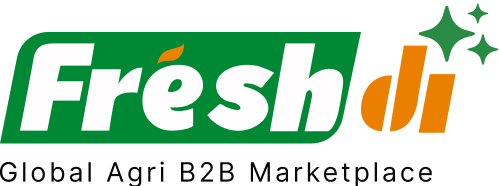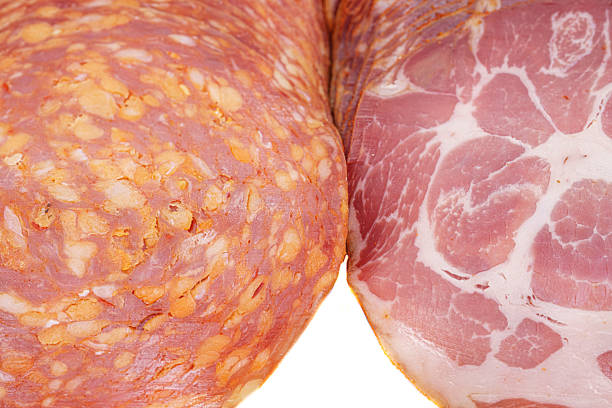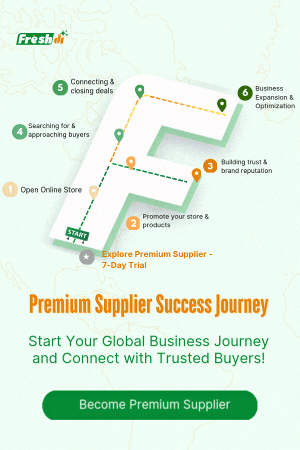Introduction – Current State of Play: The Meat Sector in Indonesia
If you’re in the meat trade, Indonesia is a country that should be on your radar—especially in 2025. The landscape is shifting fast, and if you blink, you might miss a game-changing update. From government reshuffling beef import quotas, to ambitious dairy cattle programs, the meat industry in Indonesia is going through one of its most dynamic phases yet.
Let’s start with some of the most impactful recent events.
In early 2025, the Indonesian government made a bold move by reallocating 100,000 tonnes of beef import quotas to state-owned enterprises like PT Berdikari and PT Perusahaan Perdagangan Indonesia (PPI). While this aims to stabilize prices, it’s stirred up concerns among private importers. Fewer players in the game could mean higher prices and slower responsiveness.
Meanwhile, a $3 billion national free meals program is underway, which includes importing one million dairy cows over five years. But by mid-2025, only a fraction—11,375 cows—had landed on Indonesian soil. That’s way behind the annual target of 200,000, casting serious doubt on the program’s success.
Add in a booming demand during Ramadan and Eid seasons, and you’ve got a classic supply and demand squeeze. Prices skyrocketed. Wet market beef hit IDR 150,000/kg, and premium Qurban cattle reached up to IDR 100 million.
And let’s not forget logistics. Cold chain infrastructure is expanding quickly, with over 250 companies attending a major exhibition in Jakarta to tap into the growing meat and seafood export sector. This points to a market that’s not just growing, but transforming.
Oh, and weather? Despite extreme weather conditions during the 2024 holiday season, government officials assured food supplies, including meat, were safe. That level of preparedness is encouraging, but not guaranteed to last.
All of this adds up to one clear message: Businesses must stay agile, informed, and plugged into real-time updates to thrive in Indonesia’s meat market.
Deep Dive – Market Movers: Recent Developments and Consequences
2025 has been a year of action, not just talk. Here’s a closer look at the domino effect triggered by these developments:
-
Beef Import Quota Shake-Up
With the state-owned enterprises gaining a bigger slice of the import pie, private importers are facing tighter margins. That’s pushing some to explore local sourcing or diversify meat types—like shifting from beef to chicken or goat. -
Dairy Cow Dilemma
The underwhelming progress of the dairy cow import plan could slow down milk production and impact local meat availability in the long run, especially if the program remains under-delivered. -
Cold Chain Momentum
The emphasis on cold chain infrastructure is a big win for exporters. If your business relies on importing or exporting meat, this means fresher products, longer shelf life, and fewer losses. -
Seasonal Demand Spikes
Retailers and importers are now planning months ahead for Ramadan and Eid. Smart suppliers are already preparing for Qurban season with premium cattle in stock, ready to serve the high-end market.
Top 3 Verified Meat Suppliers in Indonesia – Navigating Current Market Realities
When you’re navigating a fast-changing market like this, supplier reliability becomes everything. Here are the Top 3 Verified Meat Suppliers in Indonesia in 2025—chosen based on export records, certifications, Freshdi buyer reviews, and operational responsiveness.
1. David Bunardi
A trusted name in the meat exporting business, David Bunardi has built a reputation for quality and consistency. What sets them apart?
- Strong ties with certified slaughterhouses
- Consistent exports to Southeast Asia and the Middle East
- Excellent Freshdi ratings for on-time delivery and responsiveness
This supplier is especially valuable for buyers dealing with fluctuating demand because of their ability to scale quickly.
2. Tanihub Indonesia
Tanihub is known more broadly in the agri-tech space, but their meat division has been making waves. Why?
- Tech-driven logistics ensure freshness and traceability
- Extensive product variety, including local and imported cuts
- Strong local sourcing network aligns with government policy shifts
They’re ideal for buyers looking to build sustainable, long-term relationships with suppliers deeply rooted in the Indonesian market.
3. Trio Kreasindo
Trio Kreasindo is an emerging leader in meat exports, especially for premium cuts and value-added products.
- High-grade beef and goat meat
- Strong certifications and export compliance
- Competitive pricing even during high-demand seasons
They’re a top pick if you’re aiming for quality without breaking the bank.
Dynamic Ranking Note
It’s worth mentioning that platforms like Freshdi offer dynamic supplier rankings, such as “Supplier of the Month/Quarter.” These rankings reflect real-time performance, reviews, and transaction volumes—so keep an eye out for fresh stars rising in the market.
Market Navigation – Strategic Responses to Today’s Meat Landscape in Indonesia
So, what should you do with all this information?
First, if you’re sourcing meat from Indonesia, you need to rethink your risk assessments. The beef import quota shift means fewer private players, which could lead to price manipulation or bottlenecks. It’s time to diversify—look into chicken, goat, or even processed meat alternatives.
Second, watch the calendar. With demand peaking during religious festivals like Ramadan and Eid, plan your procurement six months in advance, not six weeks. Smart businesses are already placing Qurban orders for 2026.
Third, go local when possible. With dairy cow imports lagging, the government may pivot towards local cattle development. Suppliers like Tanihub who have strong local networks will likely benefit—and so can you.
Fourth, embrace logistics innovation. Leverage suppliers who are already integrated with cold chain solutions. This is where Freshdi’s verified reviews and RFQ tools can help you spot which suppliers are future-ready.
Conclusion – Key Takeaways for Businesses in a Dynamic Market
2025 has reshaped the meat market in Indonesia. From beef quota realignments to missed dairy targets and booming seasonal demand, every link in the supply chain is under pressure—and opportunity.
Here’s what businesses need to do:
- Stay informed: Track policy changes and trade news closely.
- Diversify sourcing: Don’t rely solely on beef or a single importer.
- Plan strategically: Anticipate seasonal demands and adjust procurement cycles.
- Choose smart suppliers: Pick vendors with tech-driven logistics, strong certifications, and great buyer reviews.
- Use platforms like Freshdi: With real-time RFQ updates, supplier verification, and market insights, Freshdi empowers buyers to make well-informed, timely decisions.
Checklist: Smart Buying Strategy for Indonesian Meat in 2025
- ✅ Monitor government policy announcements monthly
- ✅ Assess supplier Freshdi scores before placing large orders
- ✅ Diversify meat types beyond beef
- ✅ Lock in Qurban season orders early
- ✅ Use cold chain-capable suppliers for longer shelf life
- ✅ Watch for Freshdi’s “Supplier of the Month” for performance trends
Future Outlook: What’s Coming in 2026?
- Expect a second wave of dairy cattle imports, or a pivot to local sourcing.
- Cold chain investments will likely double, improving export reliability.
- More private-sector pushback on quota reallocations could reshape trade dynamics.
- New tech integration in traceability and logistics will become a standard, not a luxury.
How Freshdi Empowers Buyers
Freshdi isn’t just a directory—it’s a decision-making tool. Whether you’re sourcing processed meat, live cattle, or frozen cuts, Freshdi gives you:
- Verified supplier profiles
- Real-time RFQ trend data
- Market alerts tied to news
- Dynamic performance rankings
- Buyer-supplier communication tools
All in one place. So you can move fast, buy smart, and stay ahead.
References
- Beef Import Quota Shift in Indonesia
- Indonesia’s Dairy Cow Import Program
- Cold Chain Expansion
- Ramadan Meat Demand Surge
- Qurban Cattle Market Trends
- Food Supply Amid Extreme Weather
FAQs
1. What is causing the price increase in beef in Indonesia?
The reallocation of beef import quotas to state-owned enterprises and seasonal demand surges during Ramadan and Eid are the main contributors.
2. Why is the dairy cattle import program struggling?
Despite a $3B investment, logistical and procurement challenges have resulted in only a small portion of the planned imports being delivered in 2025.
3. How can I ensure freshness when importing meat from Indonesia?
Choose suppliers with integrated cold chain logistics, like those verified on Freshdi.
4. What’s the best time to source Qurban cattle?
It’s ideal to start sourcing at least 6 months before Eid al-Adha due to high seasonal demand and limited premium livestock availability.
5. How does Freshdi help meat buyers in Indonesia?
Freshdi offers verified supplier listings, RFQ alerts, real-time market insights, and dynamic rankings to help businesses make smarter sourcing decisions.


